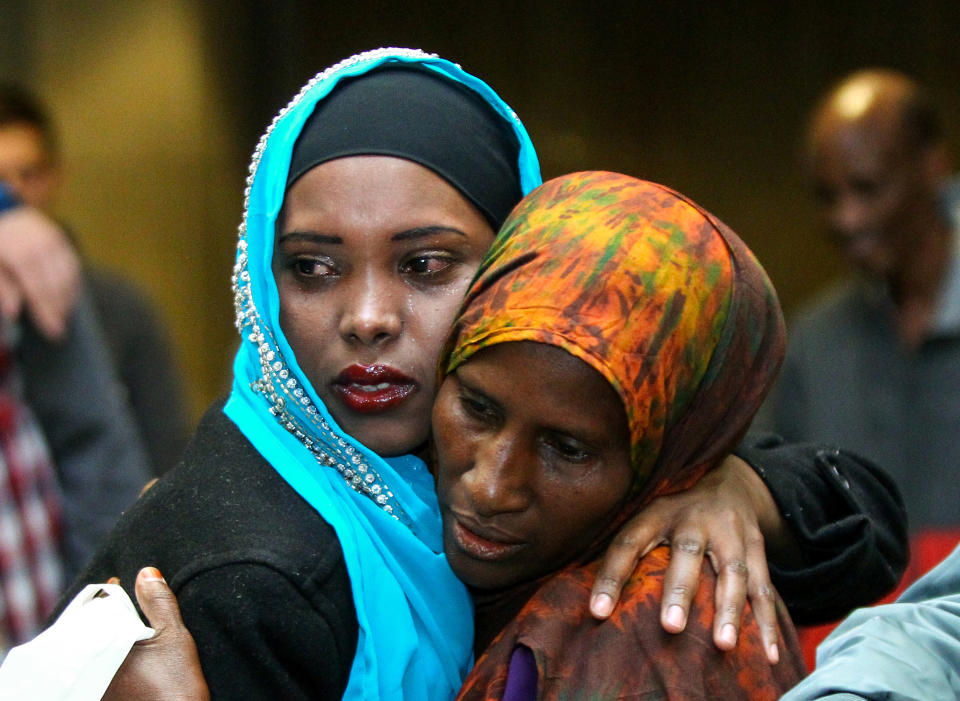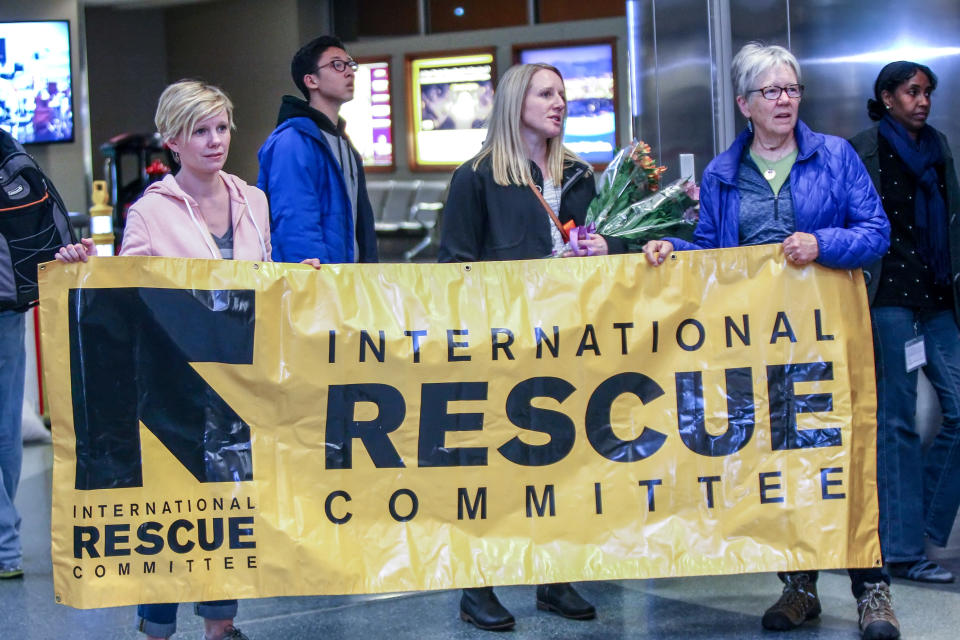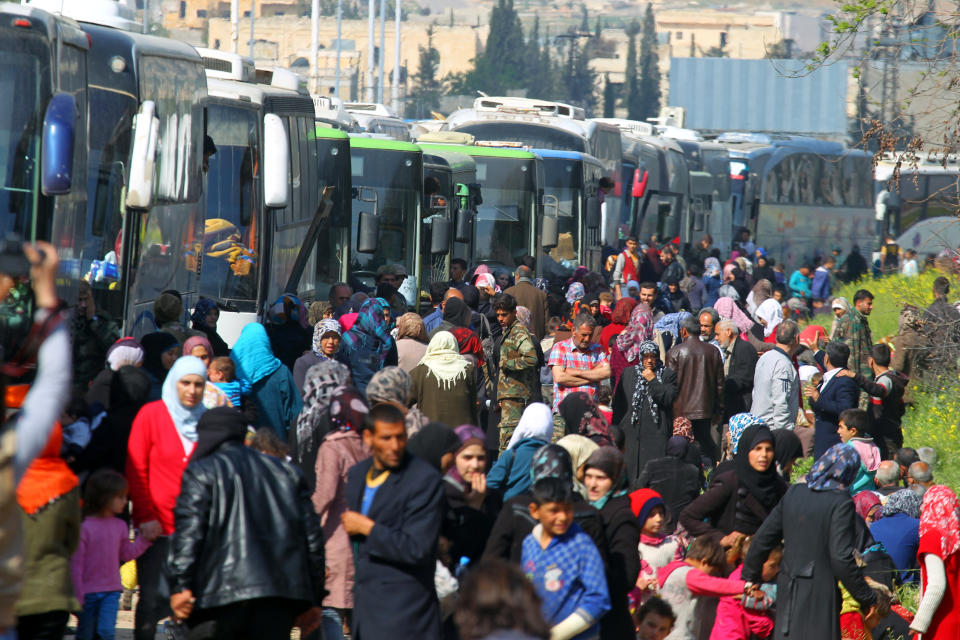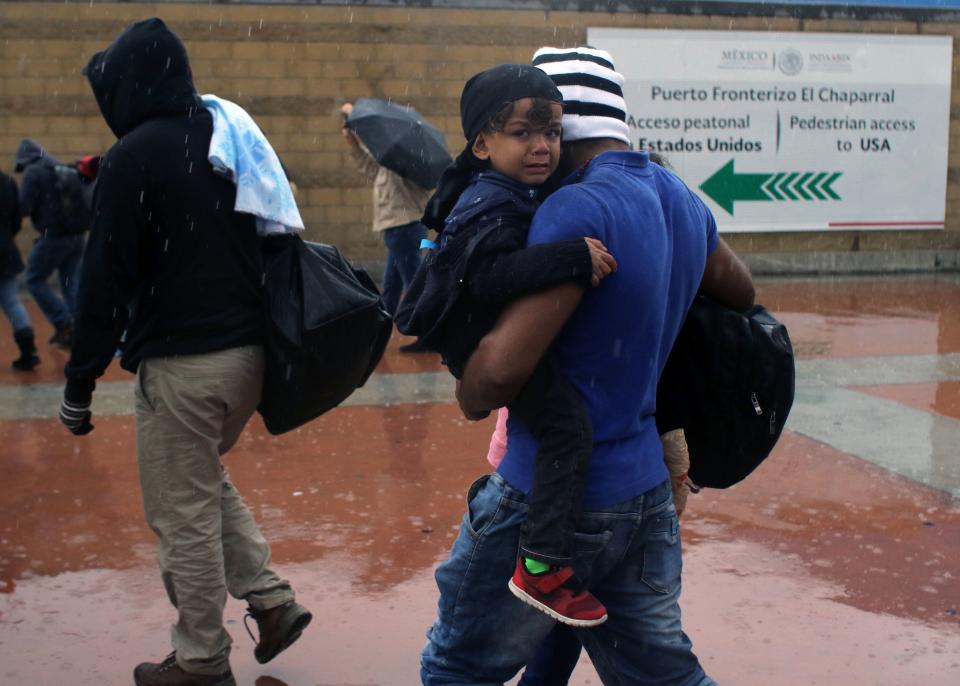In setting new limits on refugees, White House freezes out humanitarian agencies
Nine months after President Trump issued his first travel ban, the Supreme Court weighed in again Tuesday, this time granting the administration’s request to bar most refugees, including those with “formal assurances” from local resettlement agencies that they have a place to stay. The decision comes as the administration prepares to set a refugee cap for the coming fiscal year — without the usual input from humanitarian agencies, who fear the limit will be at an all-time low.
About 24,000 refugees awaiting processing were thrown back into limbo by the court’s ruling, after a short-lived reprieve from the Ninth Circuit Court of Appeals, which ruled last week that ties to a resettlement agency would qualify for admission under the president’s second version of a travel order.
In June, the Supreme Court allowed portions of a revised executive order to go into effect. The move barred travelers from six predominately Muslim countries for 90 days and refugees for 120 days unless they could prove a “bona fide” relationship with a “person or entity in the U.S.” The administration had been interpreting this as requiring a close relative living in the States. Tuesday’s ruling reverses the lower court’s decision, again excluding refugees’ ties to resettlement agencies. But resettlement agencies say that even if the flow of refugees was reinstated, damage has already been done and the administration’s signals point to further dismantling of the program as a whole.
Admissions for this year are already down 60 percent from last year, and when the president sets his ceiling on admissions for the coming fiscal year, which begins Oct. 1, they are widely expected to be lower still. President Trump lowered the cap for the current year to 50,000, the lowest ever set by a president and well below the annual average of more than 95,000.

The determination is to be made “after appropriate consultation with Congress,” a state department official says. But historically the process has included input not just from Congress but from other agencies within the executive branch and outside groups, including multiple humanitarian agencies, says Ronnie Newman, director of strategic initiatives at the American Civil Liberties Union. Newman, who formerly served as the director of refugee protection on the National Security Council under President Barack Obama and has drafted past presidential determinations, said the process is “elaborate” and can take up to eight months.
For almost four decades, the U.S. has conducted refugee resettlement as a public-private partnership that has never been subject to party politics. This year, though, two of the largest resettlement agencies, the International Rescue Committee and HIAS, say they have not yet been consulted by the State Department, the Department of Homeland Security or the White House regarding refugee admissions.
The State Department declined to respond to the resettlement agencies’ assertion, citing “internal deliberations.”
Both IRC and HIAS work in the world’s most vulnerable nations and along with other organizations have resettled more than 3 million refugees. This is the first year they have not been consulted on setting a refugee cap.
“It’s very unclear how [the administration] is making policy, particularly on refugee issues, because it’s not being made consulting with the organizations and experts who have always been a part of this process,” says Melanie Nezer, senior vice president of public affairs at HIAS.

Typically, the effort is spearheaded by the State Department and brings together stakeholders such as the permanent mission to the United Nations, the Department of Defense and the National Security Council, which have in the past been sympathetic to the plight of refugees. But this year, those who may hold views contrary to the dominant position in the White House are “being marginalized,” says International Rescue Committee’s senior director of policy and advocacy, Anna Greene.
According to the New York Times, Stephen Miller, the president’s senior adviser for policy and an immigration hard-liner, has been pressing for a lower ceiling.
Under the 1980 Refugee Act, the president must provide an explanation of facts to validate the refugee ceiling in a report to Congress that goes well beyond simply listing a number, says Greene. By law it must be “justified by humanitarian concern or otherwise national interest.”
Greene says the lack of communication this year and the dramatic slowdown imposed by the emergency travel ban prompted the IRC to issue an unprecedented shadow report, lobbying for the admissions ceiling to be at least 75,000.
“We had no confidence the report to Congress would have any relevant facts in it,” she says.
The report cites the current and largest refugee crisis on record, leaving 22.5 million in peril across the world. Citing risks well beyond humanitarian concerns, the report warns that backing away from America’s legacy of commitment to refugees will have devastating consequences for foreign policy and security abroad.

Even after the 9/11 terrorist attacks, a time of clear national emergency, President George W. Bush set the year’s cap at 80,000 and only paused the system for two months while the country got back on its feet.
“Obviously, 75,000 is not our desired number, it’s very much a pragmatic choice,” says Greene.
After numerous stops and starts resulting from travel ban litigation and various procedural changes, the system has endured dramatic backlogs in refugee processing.
“It’s certainly not appropriate if we were actually being super-responsive to global need and moral imperative, but it was a reasonable number… that the system can pretty easily do,” says Greene.
Still, it is not only the numbers that are worrisome. It’s what comes in practice and simple procedural changes done in the name of “national security” rather than strict policy or law, says Newman.
“We’ve seen these types of changes start to occur in the way they process not only refugees, but visa applicants — a way to gum up the system that will reduce numbers and is separate from whatever number they set in a document.”
In August, the president endorsed the Raise Act, which would prioritize English speakers and put further emphasis on education and skill level to create a “merit-based” immigration system and end the visa-diversity lottery, which awards 50,000 green cards a year.

There are also less publicized moves such as adding security procedures, like social media vetting. But Greene says some changes seem motivated less by security concerns than a desire to control demographics and create more favorable optics. She cites the curtailment of the Central American Minors program, a family program under the larger resettlement umbrella that reunifies at-risk children with parents who are documented immigrants in the U.S. The children do not have to meet the precise refugee definition, but have to qualify for humanitarian parole. The parole part of this program, which is by far the largest part, has been canceled and now potentially faces full elimination.
And there is little avenue for appeal from the president’s decision, says Newman. “At the end of the day it’s all the executive branch’s decision. … The degree of discretion in this space is pretty significant … they can limit the size of the program without much recourse from the outside,” he says.
Meanwhile, as they fight for a higher cap for next year, resettlement organizations have to come up with a plan for the 150,000 refugees who were already being processed but have been thrown into limbo since a June stay of the second executive order.
These people have been through years of invasive interviews, clearances and forms where every last detail is scrutinized until they step onto the plane, says Nezer. For that process to end with “Nothing’s changed with you but we’ve changed as a country … what does that say about us that we treat people that way? … Our identity and leadership in the world has taken a big hit.”
Read more from Yahoo News:


